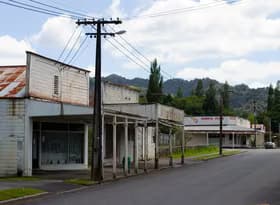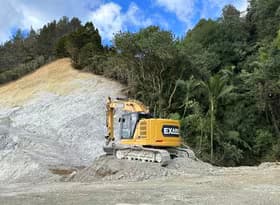
Job losses – trust, but verify
This article has now been updated with an additional chart at the bottom, showing the now-revised data from Stats NZ
US President Ronald Reagan is famous for repeatedly using the phrase “trust, but verify”, underscoring the importance of testing assumptions to confirm that claims are true. It’s a phrase that economists also keep in mind when dealing with a vast array of different datasets.
It’s sometimes difficult to completely trust any one set of figures, but a range of sources all pointing towards the same sort of trend helps support or dismiss some numbers. Equally, unusual and weird results require a common-sense approach to ask “is this trend true, or might there be something else going on?”.
It’s a question we asked over the last week about claims that job losses of over 11% had occurred in Wellington City. We’re thankful that Stats NZ has reviewed the data, established and acknowledged an error has occurred, and is working on a fix.
Where do you count a job?
Media reports on Friday 13 December suggested that Wellington City had lost over 11% of its workforce in September 2024 compared to a year ago – a 19,000-job decline. This enormous drop seemed far too large a fall, considering all the other economic indicators we monitor. Spending activity in Wellington City hadn’t plummeted (like you’d expect if employment had plunged), and Jobseeker Support figures had increased by fewer than 2,000 people. This claim didn’t meet our common-sense test.
Location – where you live or where you work?
The 19,000-job decline in Wellington City is based on Stats NZ’s Business Employment Data dataset (BED), which includes two jobs measures:
- Filled jobs – the count of filled jobs based on where the worker lives – so a worker that lives in Te Awamutu in Waipā District, but works in an office in Hamilton, is coded to Waipā District due to the residential address of that person. From here, we’ll call this measure “residence-based”.
- Filled jobs (workplace location based) – the count of filled jobs based on where the job is located – so a business that had its office in Tauranga, and had 40 employees, would show 40 jobs located in Tauranga (even though some people might live in Western Bay of Plenty or Whakatāne, for example). From here, we’ll call this measure “workplace-based”.
Generally, the filled jobs by workplace accounts for different geographic units across the country – that is, if a business has a head office in Whangārei, but stores in Mangawhai and Kaitāia, each business location is defined individually as a separate geographic unit, rather than allocating all jobs back to a central headquarters (which would otherwise make retail activity hard to track!).
A huge gulf between residence and workplace figures
Instead of just looking at the one local area (Wellington City), we examined data for each of the 67 local council areas, for both residence-based and workplace-based jobs. Undertaking this analysis showed what we thought was a hard-to-comprehend situation.
According to the workplace-based data, Wellington City had lost 19,430 jobs in September 2024 compared to a year earlier. This fall was far larger than the second-largest decline, of 10,225 jobs, in Auckland. But looking at residence-based jobs, Wellington City had lost just 2,220 jobs compared to a year ago. There can clearly be a gap between the residence-based and workplace-based figures, given the amount of commuting to jobs that occurs (alongside working from home, etc). Even so, the gulf was still huge, so we remained sceptical.
Looking at the local council areas nearby (we looked at all local council areas in the Wellington Region, plus Horowhenua District) as a reasonable area of likely commuting to Wellington City, the total change of jobs (residence-based) was only a drop of 3,345. Taken together, these figures suggested that there were 3,345 fewer people in work, who lived in the Wellington Region plus Horowhenua compared to a year ago. That figure still left around 16,000 people who apparently have their job based in Wellington City, but who don’t live in the wider region.
That commute looks like a heck of a long one, but perhaps it might be true. Yet the point being made was that an 11% drop in Wellington City jobs would be hitting the city’s economy hard, with less spending with retail and hospitality operators. It’s clear that Wellington City is hurting economically, and that retail and hospitality are down – but not to the magnitude of losing more than one in 10 workers locally. If the numbers were correct, the roughly 16,000 workers whose jobs are located in Wellington City but who don’t live in the wider Wellington area, probably don’t come into the Wellington CBD and spend very often at all (so those job losses shouldn’t directly affect Wellington spending).
In reviewing the difference between the workplace-based and residence-based figures, we also wondered if there were areas that had seen the opposite effect, with a large increase in jobs. Lo and behold, there were. Central Otago District had seen workplace-based jobs more than double in a year, with 11,289 more jobs in September 2024 (from 10,449 workplace-based jobs in Sep 23 to 21,738 in Sep 24). Outlandish growth! Ashburton had also seen a large increase, of 5,935 jobs, or a 38% lift. Charts 1 and 2 highlight these clear issues and differences.
Taken together this outcome, is one we’d expect if there was a change or issue how and where workplaces had been geocoded to an area. So it might not have been that Wellington City had “lost” jobs, but that the head office/geographic unit of some jobs has been relocated to somewhere different.
That’s important, because both the residence-based and workplace-based filled jobs measures show very similar total job changes nationwide (with small differences due to some jobs not being geographically allocated). If the Central Otago and Ashburton figures are incorrect, then those jobs must have previously been coded somewhere else. That being the case, they should be coded to another area.
The job gains (based on residential address) aren’t huge across the country, meaning that the increase of more than 10,000 jobs in Central Otago (and other large increases in Ashburton and, to a lesser degree, Christchurch) are unlikely to have come from just any area. They’re more likely to have “come from” (originally been coded to) an area with a big loss, like Wellington, Christchurch, Tauranga, Hamilton, or Dunedin Cities.
Important to look across the range of datasets
We welcome today’s announcement from Stats NZ that they have discovered some issues in the workplace-based filled jobs figures, and that they are working to correct and republish this data series. We won’t know for sure what the outcome will be until this process has been completed, but we wouldn’t be surprised to see a change in several areas, including Wellington City.
It’s also important to note that Stats NZ has done its best at a challenging time, with the agency being asked for more and more detailed data over time, which it has continued to support. But when datasets are pushed to their limits and beyond what they were designed for, there are always going to be some unforeseen challenges that crop up. So, it’s important to trust, but verify, datasets that don’t meet a common-sense standard, instead of cherry-picking sensational perspectives.
So, how many jobs are lost and how bad is it?
That's not to say that Wellington isn’t doing it tough. However, we expect the actual number of job losses in Wellington to be more in keeping with the range of other economic datasets we’re seeing at present. It certainly doesn’t look like a 19,000+ jobs cut has occurred, given where spending levels, house sales, and benefit support numbers (among other indicators) are sitting.
To be clear, the Wellington City job losses, on a workplace-based basis, will likely still be high compared to most of the rest of the country, and higher than the residence-based figures (given there will be some work-from-home and remote work employees there). But the economic effects of lost jobs are more likely to be related to the residence-based jobs lost, once nearby regional residence-based jobs declines are factored in. That’s because if there are workers that have a workplace location in Wellington, but live far away from the city (that is, outside the wider Wellington Region), it’s most likely they don’t come into Wellington often to spend anyway. The fact that they don’t have a job now will be felt much more closely in their spending closer to wherever they live – hence why the residence-based jobs declines will likely provide a truer reflection of the sort of economic hit an area is facing.
We will provide an update of our analysis of the jobs datasets once revised data is available.
Timeframe
We received the first query about Wellington job losses at 3:49pm on Friday and started to look into the figures. At 5:29pm we raised our concerns with Stats NZ around the data being used and the unusual trends (including our initial suspicion that there was an issue with the coding of the workplace-based jobs measure). Noting it was a Friday night, we were advised that the concern raised would be examined first thing next week.
At 5:36pm we highlighted our early concerns to the media that had contacted us.
We continue to communicate with Stats NZ around this issue.
Stats NZ statement
Attributable to Jason Attewell, General Manager - Statistical Delivery, Macroeconomic - Insights & Statistics
We were alerted to an issue in Business employment data around filled jobs by workplace location for some sub-national data, including Wellington City and Central Otago territorial authorities.
We investigated this with urgency and found that we had not identified an issue of a number of larger employers placing all of their employees in a single location (geo) when responding to our surveys.
This resulted in some jobs being incorrectly allocated to locations, which made it appear as though jobs in certain territorial authorities and regions had been ‘lost’, when this was not the case.
We strive to provide the best data possible. In this case we didn’t pick up the change in respondent behaviour, and we thank those that brought it to our attention.
Our investigations have confirmed that the national level data for filled jobs by workplace location is not affected by this issue. This information is sourced from data in the tax system, and we are confident that this is robust and of high quality.
We are now working on a fix to revise this data and correct the inaccurate responses, as well as looking at options for introducing more checks to avoid this happening again. We apologise for any inconvenience this has caused.
Because large employers can operate in more than one location, for the regional and territorial authority level, we use additional survey data supplied by employers to allocate employees to workplace locations.
While we are confident that the modelling for doing this is methodologically robust, it is dependent on the quality of the information received from those large employers.
For a sub-national breakdown of job numbers and changes, we recommend using the data for “filled jobs”- which is produced by employee location at the territorial authority and regional level, as this is also fully sourced from tax system data. This differs from the filled jobs (workplace location based) data, where the issue was found.
You can find this breakdown for locations, including Wellington City in table 11 in the Excel table ‘Business employment data: September 2024 quarter’ available under Download data.
Revised figures show more reasonable declines
Updated Monday 23 December 2024
Stats NZ has now published revised figures for workplace-based filled jobs. Residence-based filled jobs are unchanged. Stats NZ has noted the change on the Business Employment Data (BED) release page for the September 2024 quarter.
Infometrics analysis shows that our suspicions about the data were correct, with the revisions showing Wellington City has lost around 2,370 jobs in the last year (by workplace location) – compared to the originally quoted 19,430.
Other areas have been revised too, with Auckland’s drop revised lower (from -10,225 to -7,770 in the revised data). Area that had seen apparent huge growth, like Central Otago, Christchurch, and Ashburton, have all seen their job losses heavily revised to a more sensible-looking figure. Chart 3 highlights the changes:



























